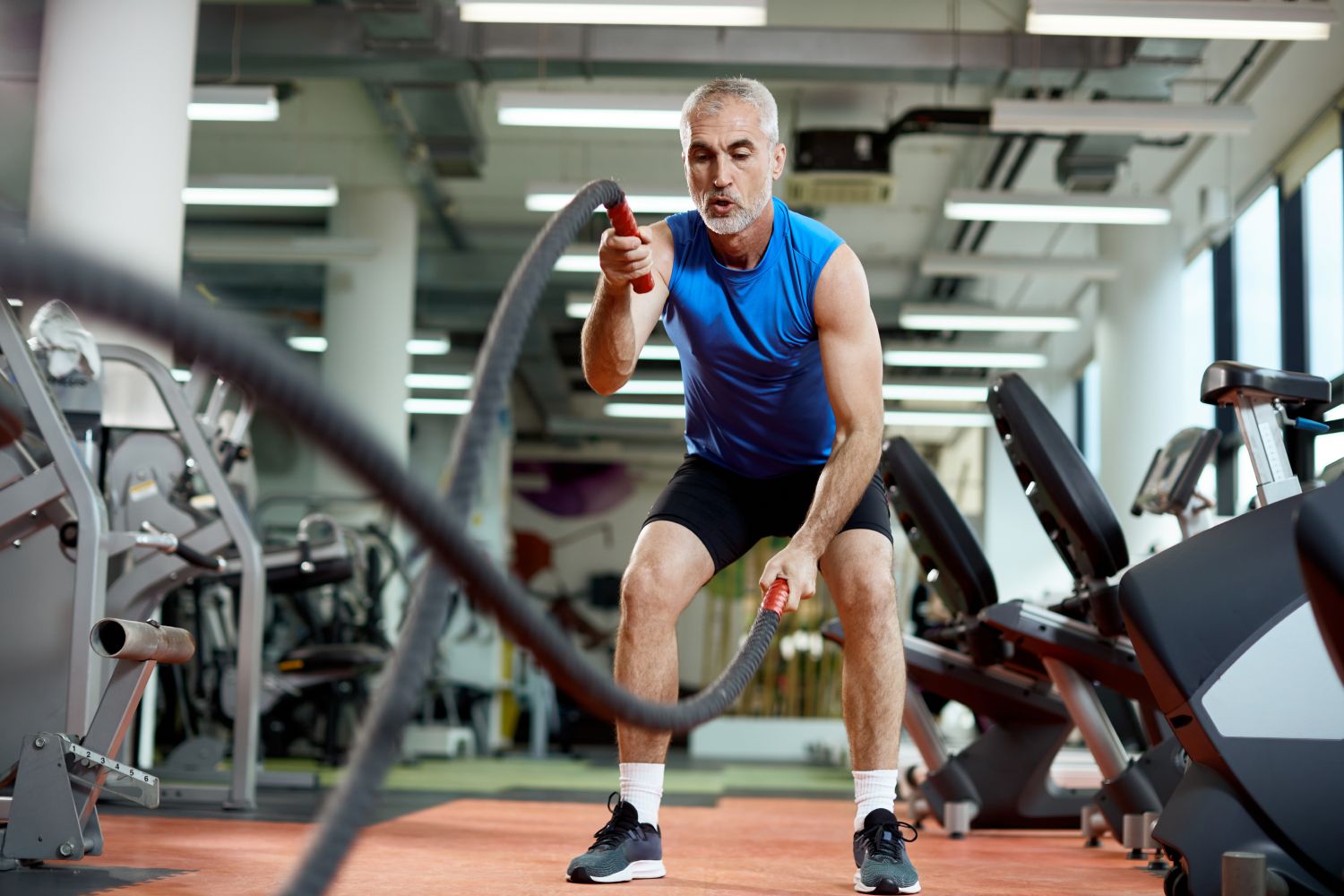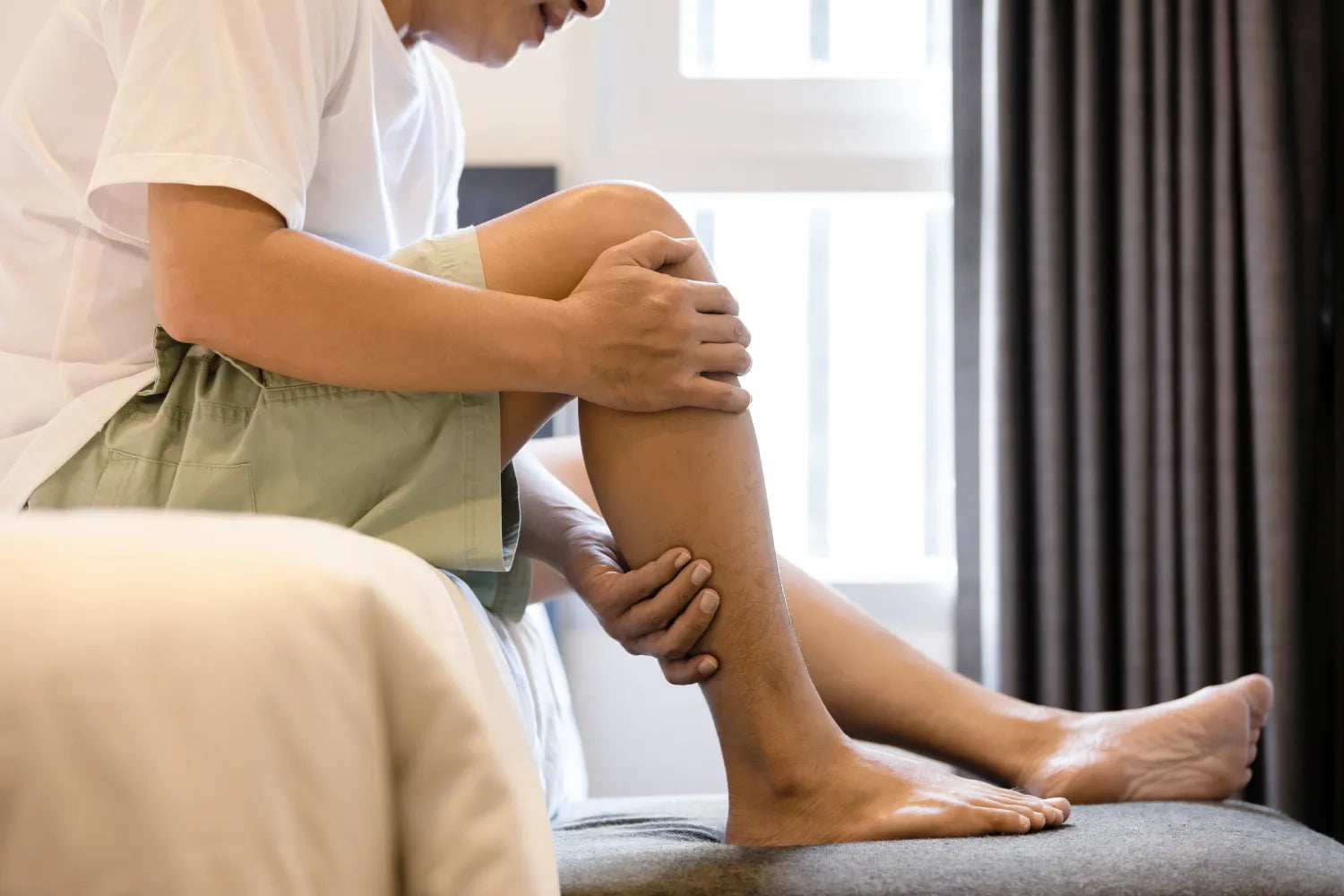Medically Reviewed By | Dr. Kate Panawash, PT, NCS, DPT
Calf health is crucial, not just for athletes but for anyone engaged in daily physical activities. The calf muscles are pivotal in walking, running, and maintaining balance.
Unfortunately, these muscles are also prone to strains, which can significantly impede mobility and overall quality of life. Understanding how to prevent calf strains is essential, as is knowing effective recovery methods.
Let’s look at calf strains and insights into their impact, emphasizing the importance of prevention and recovery for maintaining optimal calf health and overall physical wellness.
What Are Calf Strains?
Calf strains can happen when the muscles at the back of the lower leg are overstretched or torn. This injury is common in activities requiring sudden acceleration or changes in direction. The calf is comprised of two major muscles — the gastrocnemius and the soleus — which are integral for movement.
Strains often occur due to overuse, significant increases in load or demand, inadequate warm-up, or a lack of flexibility and conditioning. Factors like poor footwear, uneven terrain, and a sudden increase in physical activity can also contribute to the risk.
Recognizing these causes is the first step toward effective prevention and ensuring the long-term health of your calf muscles.
Why Is Stretching Essential?
Stretching plays a vital role in maintaining calf muscle health and preventing strains. Regular stretching enhances flexibility, increases blood flow, and reduces muscle stiffness, thereby decreasing the risk of injury as well as contributing to overall muscle health and resiliency.
Effective calf stretches include:
- Standing Calf Stretch: Place your hands on a wall, extend one leg back, keep your heel on the ground, and lean forward, feeling the stretch in your calf.
- Seated Calf Stretch: Sit with your legs extended, loop a towel or resistance band around your foot, and gently pull towards you, stretching the calf muscle.
- Downward Dog: In this yoga pose, press your heels towards the ground while your body forms an inverted V, stretching both calves.
Incorporating these stretches into your daily routine can significantly aid in preventing calf strains and maintaining muscle health.
What Are Effective Calf Warm-Up Strategies?
Warming up before any physical activity is essential to prepare your muscles and reduce the risk of strains, especially in the calves.
Here are some effective warm-up strategies:
- Jogging in Place: A light jog or marching in place for a few minutes helps increase overall body temperature and blood flow to the muscles.
- Ankle Circles: Lift one foot off the ground and rotate your ankle in both directions. This exercise warms up the ankle joint and surrounding muscles, including the calves.
- Leg Swings: Hold onto a stable surface and swing one leg forward and back, then side to side. This dynamic movement loosens up the hip and calf muscles.
- Calf Raises: Slowly rise onto your toes and then lower back down. This movement directly targets and warms up the calf muscles.
- Dynamic Stretching: Incorporate dynamic stretches like walking lunges or high knees, which actively engage and prepare the calf muscles for exercise.
Integrating these warm-up exercises into your routine can effectively prepare your calves for physical activity and significantly reduce the risk of strains.
Strength and Conditioning for Calf Health
Fortifying calf muscles through strength and conditioning is a cornerstone in preventing strains. Strengthened calves are more resilient and less prone to injury during physical activities.
Here are some recommended exercises:
- Calf Raises: A fundamental exercise where you rise onto the balls of your feet and then slowly lower down. This can be done standing or on a step for an increased range of motion.
- Seated Calf Raises: Performed with weights on your knees, this targets the soleus muscle specifically.
- Box Jumps: These plyometric exercises enhance power and strength in the calf muscles.
- Farmer’s Walk on Toes: Walking on your toes while holding weights helps build calf endurance and strength.
- Eccentric Heel Drops: Recommended by Dr. Katelyn Panawash, a Doctor of Physical Therapy (DPT) and Board Certified Neurologic Clinical Specialist (NCS), eccentric strengthening activities are shown to be extremely effective for calf health by focusing on the controlled lengthening of the muscle.
Standing on a step or elevated surface with heels slightly off the ledge (make sure to use proper support for balance), push up and lift onto your toes, before slowly lowering the heels below the level of the step.
“This specifically targets the eccentric contraction of the calf muscles, strengthening the muscles and tendons and reducing the risk of strains during forceful or rapid movements, like a sudden stop or change in direction,” Dr. Panawash comments.
Regularly incorporating these exercises into your fitness routine can significantly bolster calf muscle health, making them less susceptible to strains.
Incorporating Rest and Recovery
Rest and recovery are pivotal in any fitness routine, particularly for preventing overuse injuries like calf strains. Rest days are integral to a balanced workout plan, allowing muscles time to repair and strengthen.
Enhancing this recovery phase can involve various techniques:
- Active Recovery: Engaging in light activities such as walking or gentle cycling can help maintain blood flow, aiding muscle repair.
- Stretching and Foam Rolling: These practices are vital for relieving muscle tightness and improving flexibility.
- Recovery Aids: At Incrediwear, we created Calf Sleeves that can complement your recovery strategy. By supporting circulation, they aid in soothing discomfort and maintaining the healing process, thus offering support against potential strains.
Preventive Wear and Support
In preventing calf strains, supportive wear can be a valuable addition to your fitness arsenal. These items offer both support and enhanced benefits for leg health:
- Circulatory Support: Wearing items like our Circulation Socks during workouts or daily activities can help support blood flow and calm swelling, supporting overall calf health.
- Technology in Supportive Wear: Our Fingerless Circulation Gloves showcase the technology used across our range, including calf care. This approach to supporting circulation can be crucial in maintaining muscle health and recovery.
Incorporating supportive wear in your routine, alongside other preventive measures, can provide additional care to your calf muscles, aiding in strain prevention and overall muscular well-being.
Conclusion
As we conclude our guide on calf strain prevention and recovery, it's clear that a holistic approach is key. From understanding the mechanics of calf strains to implementing effective warm-up routines, strength exercises, and essential rest and recovery periods, every aspect plays a crucial role in maintaining calf health.
Dr. Panawash highly recommends seeing a trained professional in this area if needed: “Working with a physical therapist can help you develop an integrated and targeted approach for your unique needs and ensure long-term calf health.”
At Incrediwear, we believe in empowering individuals on their journey to optimal physical well-being. Remember, taking proactive steps in calf care enhances your performance and contributes significantly to your overall fitness and health.
Embrace these practices and witness their positive impact on your athletic endeavors and daily life.
Sources:
Pulled Calf Muscle: Treatment, Symptoms & Recovery | Cleveland Clinic
Calf Muscle: Anatomy, Function and Common Conditions | Cleveland Clinic
Read more

Medically Reviewed By | Dr. Kate Panawash, PT, NCS, DPT Golf, often viewed as a relaxed and low-impact sport, surprisingly leads to a myriad of injuries for both amateurs and pros alike. Despite it...

Did you make a lofty New Year’s resolution in January? Perhaps you started out the year with the best of intentions, determined that this would be the year you’d get fit and reach your goals once a...






Leave a comment
All comments are moderated before being published.
This site is protected by hCaptcha and the hCaptcha Privacy Policy and Terms of Service apply.